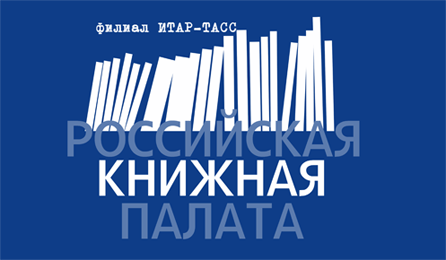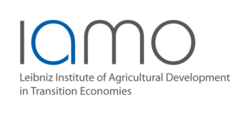Chayanov A.V. Main Ideas and Methods of Social Agronomy (Part 1) (Article of A.V. Chayanov) // The Russian Peasant Studies. 2020. V.5. №1. P. 6-30.
DOI: 10.22394/2500-1809-2020-5-1-6-30
Annotation
The book by Alexander Chayanov Main Ideas and Methods of Social Agronomy is one of his key interdisciplinary works written and published at the beginning of the October Revolution and the Civil War. In this work, the economist Chayanov is a social philosopher considering the rural evolution as determined not only by the market and the state but mainly by the will and knowledge of rural households that can be led to the sustainable rural development by the organized public mind (a kind of a synonymous for civil society). Its most important social institution in the rural sphere is social agronomy. Chayanov emphasizes that social agronomy is one of the youngest social institutions. It appeared in the late 19th century in Europe and North America and in three decades turned into an influential movement uniting agrarian scientists, agrarian activists and a huge number of peasants striving for agricultural knowledge for more productive and cultural development of their households.
In this book, Chayanov is not only a social philosopher but also a social activist and organizer, teacher and psychologist. The book is based on his seminar, ‘Social Agronomy and Agricultural Cooperation’, which incorporated many years of personal communication with peasants, agronomists and agrarian scientists about dissemination and application of agrarian knowledge by peasants.
We publish the first five chapters of the book about the tasks and methods of social-agronomic work, its program and organization. For the contemporary reader, this publication is not only of historical interest. Chayanov’s ideas are still relevant for the effective interaction of professional agrarians with the rural population, peasants and farmers in the organization of agricultural knowledge, agricultural cooperatives and agricultural consulting.
The publication with comments was prepared by A.M. Nikulin.
Keywords
social agronomy, agricultural evolution, peasants, state, agrarian reforms, agrarian knowledge, agricultural cooperation
About the authors
Editor: Nikulin Alexander M., PhD (Economics), Head of the Center for Agrarian Studies, Russian Presidential Academy of National Economy and Public Administration; Head of the Chayanov Research Center, Moscow School of Social and Economic Sciences. 119571, Moscow, Vernadskogo Prosp, 82.
E-mail: This email address is being protected from spambots. You need JavaScript enabled to view it.
Translator: Trotsuk Irina V., DSc (Sociology), Senior Researcher, Center for Agrarian Studies, Russian Presidential Academy of National Economy and Public Administration; Researcher, Chayanov Research Center, Moscow School of Social and Economic Sciences. 119571, Moscow, Vernadskogo Prosp, 82.
E-mail: This email address is being protected from spambots. You need JavaScript enabled to view it.
Chayanov A.V. Peasant economy in Belgium (Article of A.V. Chayanov) // The Russian Peasant Studies. 2019. V.4. №4. P. 53-57.
DOI: 10.22394/2500-1809-2019-4-4-53-57
Annotation
This is an early work of Alexander Chayanov first published in the journal Krestyanskoe delo (Peasant Work) in 1910. The article is based on Chayanov’s observations during his stay in Belgium in summer of 1909, when, according to one of his biographers, he tried to find development models for the Russian agriculture. On behalf of the Belgian farmer Octave Colyar, Chayanov described the changes in the Belgian agriculture after the great agricultural crisis (depression) of the late 19th century. The inflow of North-American and Russian grain to the Belgian market (the so-called ‘grain invasion’) had negative impact on prices and made agricultural producers change their specialization—Belgium turned from an exporter of grain to an exporter of livestock products. The article presents Chayanov at the beginning of his career, before the development of his theory of consumption-labor balance. Not only in his early works but also throughout his career, Chayanov used the comparative method to study the agricultural development of Russia and Western Europe. However, the Belgian case was one of the most important. In this article, Chayanov is an agrarian economist, sociologist and rural anthropologist presenting a detailed portrait of the peasant based on the history of his economy.
The publication with comments was prepared by V.O. Afanasenkov.
Keywords
agrarian history, Chayanov, Belgium, global agricultural crisis, ‘grain invasion’, peasant economy
About the authors
Editor: Vladislav O. Afanasenkov—Researcher, Chayanov Research Center, Moscow School of Social and Economic Sciences. 119571, Moscow, Vernadskogo Prosp., 82.
E-mail: This email address is being protected from spambots. You need JavaScript enabled to view it.
Afanasenkov V.О. An early work of A.V. Chayanov on the Belgian peasant economy (a publisher’s preface) // The Russian Peasant Studies. 2019. V.4. №4. P. 50-52.
DOI: 10.22394/2500-1809-2019-4-4-50-52
Annotation
This is an early work of Alexander Chayanov first published in the journal Krestyanskoe delo (Peasant Work) in 1910. The article is based on Chayanov’s observations during his stay in Belgium in summer of 1909, when, according to one of his biographers, he tried to find development models for the Russian agriculture. On behalf of the Belgian farmer Octave Colyar, Chayanov described the changes in the Belgian agriculture after the great agricultural crisis (depression) of the late 19th century. The inflow of North-American and Russian grain to the Belgian market (the so-called ‘grain invasion’) had negative impact on prices and made agricultural producers change their specialization—Belgium turned from an exporter of grain to an exporter of livestock products. The article presents Chayanov at the beginning of his career, before the development of his theory of consumption-labor balance. Not only in his early works but also throughout his career, Chayanov used the comparative method to study the agricultural development of Russia and Western Europe. However, the Belgian case was one of the most important. In this article, Chayanov is an agrarian economist, sociologist and rural anthropologist presenting a detailed portrait of the peasant based on the history of his economy.
Keywords
agrarian history, Chayanov, Belgium, global agricultural crisis, ‘grain invasion’, peasant economy
About the author
Afanasenkov Vladislav O.—Researcher, Chayanov Research Center, Moscow School of Social and Economic Sciences. 119571, Moscow, Vernadskogo Prosp., 82.
E-mail: This email address is being protected from spambots. You need JavaScript enabled to view it.
Chayanov A.V. On differentiation of the peasant economy (Article of A.V. Chayanov) // The Russian Peasant Studies. 2019. V.4. №4. P. 6-21.
DOI: 10.22394/2500-1809-2019-4-4-6-21
Annotation
This article by A.V. Chayanov was first published in the journal, “Paths of Agriculture” (1927, no. 5, pp. 101-21).This is a revised version of his report presented at the beginning of 1927 in Moscow at a discussion on the social-economic differentiation of the Soviet peasantry. Many prominent scientists participated in this discussion, including representatives of the two most important, ideological trends in Soviet agricultural science: on the one hand, Marxist agrarians (L.N. Kritsman, V.S. Nemchinov, Ya.A. Anisimov, I.D. Vermenichev, K.N. Naumov), and on the other hand, the so-called “agrarian neo-populists” (A.V. Chayanov, N.P. Makarov, A.N. Chelintsev).
In the report, Chayanov presents a new interpretation of the social-economic differentiation of the peasantry in Soviet Russia, which differs from the differentiation of the peasantry in pre-revolutionary Russia. According to Chayanov, after the destruction of the landlord and capitalist economies by revolution, the main reasons for the differentiation of the Soviet peasantry in the 1920s were regional contradictions in the peasant population distribution. On the one hand, peasants concentrated in the central, black earth regions, and on the other hand, they moved to the markets of sea ports and large cities. Chayanov argued that in this way, four types of relatively independent, family economies emerged from the mass of semi-subsistence peasant economies: farming, credit-usurious, commercial seasonal-working, and auxiliary economies.
Moreover, unlike the famous Marxist, three-element, agrarian scheme —“kulak– middle peasant–poor peasant”—which was developed by the school of L.N. Kritsman, Chayanov developed a more complex, six-element scheme of the differentiation of peasant economies: capitalist, semi-labor, well-to-do family-labor, poor family-labor, semi-proletarian, and proletarian. Based on this scheme, Chayanov suggested a number of economic policy steps for the systematic development of agricultural cooperation, primarily in the interests of the middle strata of the Soviet peasantry.
In the discussion of peasant differentiation in 1927, the arguments of Chayanov and his colleagues from the organization-production school were more convincing and justified than those of their opponents from the Marxist agrarians. However, in 1928, the Stalinist leadership began to inflate the threat of increasing class differentiation in the village. Thus, it initiated the struggle against the kulaks as a class, which became the prologue to forced collectivization during which Chayanov’s school was destroyed.
The publication with comments was prepared by A.M. Nikulin.
Keywords
peasantry, agricultural regions, USSR, social-economic differentiation, Chayanov, agrarian Marxists, agricultural cooperation
About the authors
Editor: Nikulin Alexander M., PhD (Economics), Head of the Center for Agrarian Studies, Russian Presidential Academy of National Economy and Public Administration; Head of the Chayanov Research Center, Moscow School of Social and Economic Sciences. 119571, Moscow, Vernadskogo Prosp, 82.
E-mail: This email address is being protected from spambots. You need JavaScript enabled to view it.
Translator: Trotsuk Irina V., DSc (Sociology), Senior Researcher, Center for Agrarian Studies, Russian Presidential Academy of National Economy and Public Administration; Researcher, Chayanov Research Center, Moscow School of Social and Economic Sciences. 119571, Moscow, Vernadskogo Prosp, 82.
E-mail: This email address is being protected from spambots. You need JavaScript enabled to view it.
Uleri F. Capitalism and the peasant mode of production: A Chayanovian analysis // The Russian Peasant Studies. 2019. V.4. №3. P. 43-60.
DOI: 10.22394/2500-1809-2019-4-3-43-60
Annotation
Although the disappearance of the peasantry under capitalism was repeatedly announced, peasants are still here, and the peasant mode of production still serves as a livelihood basis for millions of rural households. Based on Chayanov’s ideas, the article identifies some reasons for this resistance to capitalism by describing the internal functional logic of the peasant economy and the difference of the peasant mode of production from the capitalist one. The complexity and spatial-temporal variability of agricultural production and social-economic formations of the mature capitalism are replacing agriculture in the process of changes that consist of multiple transformations (Geels, 2002; van der Ploeg, 2008). One of the most debated agrarian changes is the trajectories of rural development under the persistence or dissolution of the peasant mode of production in the course of modernization that characterizes the evolution and consolidation of capitalist societies. The fate of the peasantry, or the “peasant question”, is the core part of the larger debate on the “agrarian question”, which the Marxist political economy defines as a set of agrarian transformations leading to the penetration of capitalist relations into agriculture and to the transfer from pre-capitalist, feudal or semi-feudal modes of production to capitalism (McMichael, 2006; Akram-Lodhi, Kay, 2010a; 2010b; Lerche, 2014). However today the empirical scenario is contrary to the Marxist perspective for the peasant mode of production expands and reappears in the repeasantization as a viable alternative to the capitalist agriculture (Domínguez, 2012; Corrado, 2013; Carrosio, 2014; van der Berg et al., 2018). The author presents an overview of the classical conceptualizations of the fate of the peasantry and explains “why peasants are still here” by the spatially and temporally contextualized analysis of the peasant economy in the microeconomic perspective with the help of the theory of peasant economy (TPE) proposed by Chayanov in the early 20th century.
Keywords
peasantry, capitalism, Chayanov, capital, labor
About the author
Uleri Francesca, PhD Researcher, Agrisystem Doctoral School, Università Cattolica del Sacro Cuore, Piacenza (Italy).
E-mail: This email address is being protected from spambots. You need JavaScript enabled to view it.
Chayanov A.V. The southern border of the prevailing three-field system of farming in the peasant lands of Russia by the early 20th century (Article of A.V. Chayanov) // The Russian Peasant Studies. 2019. V.4. №2. P. 62-82.
DOI: 10.22394/2500-1809-2019-4-2-62-82
Annotation
This is an article of Alexander Chayanov (1888–1937) first published in 1910 in the Agriculture and Forestry. The article is based on the graduate work of Chayanov written at the Moscow Agricultural Institute under the guidance of the Professor of agricultural economy and agricultural statistics A.F. Fortunatov. The article considers farming systems used by peasants on communal lands in the provinces of European Russia in the late 19th—early 20th centuries. Chayanov grouped main systems of the peasant economy into five types: three-field, two-field, many-field, transient (lea tillage), and upland farming. The key sources for the definition and localization of farming systems were the data of non-government (zemstvo) statistics and the descriptions of farming systems provided by local agronomists in a number of provinces. Chayanov also used the ratio of the sown and fallow lands as an indicator of the farming system. He calculated this ratio on the basis of the land statistics data collected by the Central Statistical Committee in 1881 and 1893 in 46 gubernias of European Russia. The results of his work are presented in the cartogram indicating the southern and eastern borders of the prevailing three-field system of farming. This publication is mainly for historians focusing on the agrarian history and the works of Chayanov. The publication with comments was prepared by I. A. Kuznetsov and E. S. Grishin.
Keywords
agrarian history, historical geography, three-field system, peasant economy, A.V. Chayanov
About the authors
Editors: Kuznetsov Igor A., PhD (History), Senior Researcher, Research Laboratory for Economic and Social History, Russian Presidential Academy of National Economy and Public Administration. 119571, Moscow, Vernadskogo Prosp., 82.
E-mail: This email address is being protected from spambots. You need JavaScript enabled to view it.
Grishin Evgeny S., Head of the Department of Historical Cartography and GeoInformation Systems, Research Laboratory for Economic and Social History, Russian Presidential Academy of National Economy and Public Administration. 119571, Moscow, Vernadskogo Prosp., 82.
E-mail: This email address is being protected from spambots. You need JavaScript enabled to view it.
Chayanov A.V. A Short Course on Cooperation (Article of A.V. Chayanov) // The Russian Peasant Studies. 2019. V.4. №2. P. 8-56.
DOI: 10.22394/2500-1809-2019-4-2-8-56
Annotation
Translated from: Chayanov A., A Short Course on Cooperation Published by the Central Partnership “Cooperative Publishing House,” Moscow, 1925.
Peasant cooperative movement was one of the most important topics in Alexander Chayanov’s scientific, organizational and pedagogical work. He wrote many articles and books on agricultural cooperation, and had hundreds of classes with students at universities and with peasants to explain and discuss various cooperative issues. Finally, Chayanov presented his conception of the ways to develop agricultural cooperation in his famous book Basic Ideas and Forms of Peasant Cooperation2. At the same time, Chayanov was a talented and passionate popularizer and propagandist of cooperative knowledge among the wider population. Thus, on the basis of his lectures for the Old Believers’ Agricultural Courses “Friend of Land” in Moscow in 1915, he published a booklet A Short Course on Cooperation, and in the next 10 years it was reprinted four times and became a desk book on cooperation for many Russian peasants, agronomists, and activists of rural development. This short course presents clear and unambiguous definitions of cooperation and its aims; each chapter is illustrated with popular historical and contemporary examples of the cooperative movement and of the interaction between peasant farms and specific types of cooperatives. This booklet reminds of two great genres of world literature. On the one hand, it is a propaedeutic ABC of Cooperation, like Leo Tolstoy’s ABC for Children. On the other hand, it is a political-economic Cooperative Manifesto, similar to Karl Marx and Friedrich Engels Communist Manifesto, in which Chayanov describes a fascinating struggle of the Russian and international cooperative movement for the new just social world. Under the current rural development, Chayanov’s Short Course on Cooperation is not only of a historical interest; it is an outstanding example of the unity of cooperative thoughts and deeds aimed at improving the lives of the broad strata of rural workers all over the world. This Chayanov’s work was translated into English from its fourth and last lifetime edition of 19253.
The publication with comments was prepared by A.M. Nikulin.
Keywords
agricultural cooperation, peasants, consumer cooperatives, credit cooperatives, marketing cooperatives, dairy cooperatives, cooperative solidarity
About the authors
Editor: Nikulin Alexander M., PhD (Economics), Head of the Center for Agrarian Studies, Russian Presidential Academy of National Economy and Public Administration; 119571, Moscow, Prosp. Vernadskogo, 82.
E-mail: This email address is being protected from spambots. You need JavaScript enabled to view it.
Translator: Trotsuk Irina V., DSc (Sociology), Senior Researcher, Center for Agrarian Studies, Russian Presidential Academy of National Economy and Public Administration; Professor, Sociology Chair, RUDN University. Prosp. Vernadskogo, 82, Moscow, Russian Federation, 119571.
E-mail: This email address is being protected from spambots. You need JavaScript enabled to view it.
Chayanov A.V. Letter from A.V. Chayanov to V.M. Molotov on the current state of agriculture in the USSR compared with its pre-war state and the situation in agriculture of capitalist countries (October 6, 1927) // The Russian Peasant Studies. 2018. V.3. №3. P. 6-18.
DOI: 10.22394/2500-1809-2018-3-3-6-18
Annotation
Alexander Chayanov wrote this analytical note to Vyacheslav Molotov in early October 1927 to discuss plans for the agricultural development of the first five-year plan in the USSR. Chayanov begins with a brief review of the history of world agriculture in the early twentieth century. He identifies two poles in this evolution: western (American — typically North America and partly South America, South Africa, and Australia) and eastern (Indian-Chinese, typically agrarian overpopulated countries). The American type of agricultural development is based on farms that use machinery and wage labor and are controlled by the vertical system of financial capitalism. The Indian-Chinese type of agricultural development is characterized by agrarian overpopulation of the peasantry under dominant pre-capitalist relations, exceptional labor intensity, and widespread bondage rent and credit. The rest of the world’s regions can be placed between these two poles. In the late nineteenth and early twentieth centuries, Russia is a paradoxical, complex mixture of these two types. Chayanov believed that in the agrarian science of pre-revolutionary and prewar Russia, these polarized agrarian worlds were reflected in the agrarian-economic disputes of the so-called “southerners” and “northerners” about the strategy of agricultural development. “Southerners” insisted on turning Russia into a “hundredpercent America” by the forced development of farmers’ agriculture. The “northerners” suggested supporting the regional strata of the middle peasantry and its own vertical cooperation to prevent the seizure of the village by trade and financial capital. Chayanov considered himself a “northerner”. He argued that the post-war, post-revolutionary village has changed significantly. First, the younger generation of peasants who had experienced the world war and Russian Revolution set the tone. Second, the Soviet agronomic science and cooperation of the 1920s contributed to the real progress of peasant farms. Soviet Russia has a unique chance to find a fundamentally new path of rural development, thus avoiding the Scylla of Americanfarmers’ dependence on financial capital and the Charybdis of the Indian-Chinese stagnation of peasant overpopulation. Instead of American vertical agrarian integration through the dominance of financial capital over farmers, Soviet vertical integration was to promote the development of diverse forms of peasant cooperation with the support of the socialist state. In the final part of the note, Chayanov considers the ratio of industry and agriculture in the first five-year plan and predicts a radical socialtechnological change under agricultural industrialization. The Soviet leadership ignored the ideas of this note: Stalin rejected Chayanov’s democratic type of vertical cooperation of the peasantry and preferred a horizontal type of cooperation in the form of collectivization. The publication with comments was prepared by A.M. Nikulin.
Keywords
Agrarian policy, peasants, farmers, agricultural cooperation, agrarian capitalism, socialist agriculture, ways of agricultural development.
About the authors
Chayanov Alexander V.
Editor: Nikulin Alexander M., PhD (Economics), Head of the Center for Agrarian Studies, Russian Presidential Academy of National Economy and Public Administration; 119571, Moscow, Prosp. Vernadskogo, 82.
E-mail: This email address is being protected from spambots. You need JavaScript enabled to view it.
Translator: Trotsuk Irina V., DSc (Sociology), Senior Researcher, Center for Agrarian Studies, Russian Presidential Academy of National Economy and Public Administration; Professor, Sociology Chair, RUDN University. Prosp. Vernadskogo, 82, Moscow, Russian Federation, 119571.
E-mail: This email address is being protected from spambots. You need JavaScript enabled to view it.
Chayanov A.V. What is the Agrarian Question? (Article of A.V. Chayanov) // The Russian Peasant Studies. 2018. V.3. №2. P. 6-33.
DOI: 10.22394/2500-1809-2018-3-2-6-33
Annotation
This text is a translation into English of the brochure “What is the ‘Agrarian Question’?” published by A.Chayanov in the summer of 1917, between the February and October Revolutions in Russia.
Young 29-year-old professor Chayanov took an active part in the revolutionary events of 1917, trying to justify the fine-drawn plan for agrarian reforms for the new Russia. Chayanov became one of the initiators of the creation of the League for Agrarian Reforms, which included many leading agrarians of various political trends in Russia with a view to discussing and developing a holistic strategy for agrarian reforms in Russia.
The popular-science version of his views on agrarian reform, summarizing the most varied ideas of the League for Agrarian Reforms, Chayanov presented in the brochure “What is the ‘Agrarian Question’”.
In the ideological basis of this work lies the realization of the revolutionary demand “Land to the working people!”, which affirmed the necessity of transferring the landlord’s land into the hands of the peasantry. Chayanov considered various options for such a transition of land in the form of agrarian programs of socialization, nationalization, municipalization of land, a single land tax, and the system of state regulation of land ownership.
In reforming Chayanov proposed to be guided by two principles: 1) the greatest productivity of peasant labor applied to the land; 2) democratization of the distribution of national income. The extensive development of peasant cooperation was to ensure the implementation of these principles. Chayanov also stressed in every possible way the importance of taking into account regional and national peculiarities in resolving the agrarian question in such a huge country as Russia.
Personally, Chayanov was inclined to the way of agrarian reforms combining state regulation of land ownership and progressive taxation. Though, the October Revolution under the leadership of the Bolsheviks and left-wing socialist revolutionaries in their “Decree on Land” declared the implementation of the most radical version of agrarian reforms — the socialization of the land, stopping the search for the best compromise agrarian solutions that Chayanov and his colleagues tried to implement in the League for Agrarian reforms.
Chayanov’s brochure “What is the ‘Agrarian Question’?” is a model of theoretical and practical search for alternatives to the fine-drawn solution of the agrarian question in the interests of the peasants on the basis of a broad political coalition of democratic forces.
Keywords
Agrarian reform, peasantry, revolution, A.V. Chayanov.
About the authors
Chayanov Alexander V.
Nikulin Alexander M., PhD (Economics), Head of the Center for Agrarian Studies, Russian Presidential Academy of National Economy and Public Administration; 119571, Moscow, Prosp. Vernadskogo, 82.
E-mail: This email address is being protected from spambots. You need JavaScript enabled to view it.
Trotsuk Irina V., DSc (Sociology), Associate Professor, Sociology Chair, RUDN University; Senior Researcher, Center for Fundamental Sociology Higher School of Economics, Senior Researcher, Center for Agrarian Studies, Russian Presidential Academy of National Economy and Public Administration. 119571, Moscow, prosp. Vernadskogo, 82.
E-mail: This email address is being protected from spambots. You need JavaScript enabled to view it.
Chayanov A. The history of the current state of science of organization of agriculture and taxation in the USSR (Article of A.V. Chayanov) // The Russian Peasant Studies. 2018. V.3. №1. P. 63-73.
DOI: 10.22394/2500-1809-2018-3-1-63-73
Annotation
This is the first publication in Russian of the article of the classic of the Russian agrarian-economic thought and the leader of the organization-production school Alexander Vasilievich Chayanov (1888–1937), which was written in 1929 and published in an abridged version in English in 1930 in the “American Journal of Agricultural Economics”. The full Russian version of the article is published according to the original kept in the archives of the Russian Academy of Sciences. The article considers the history of agrarian-economic science in Russia from the eighteenth century and the system of agrarian-economic education in the USSR in the late 1920s. The comments were prepared by I.А. Kuznetsov.
Keywords
History of agricultural sciences, history of economic thought, organization-production school, A.V. Chayanov.
About the author
Chayanov Alexander V.
Kuznetsov Igor A., PhD (History), Senior Researcher at the School of Public Policy Russian Presidential Academy of National Economy and Public Administration. 119571, Moscow, prospect Vernadskogo, 82. E-mail: This email address is being protected from spambots. You need JavaScript enabled to view it.





















